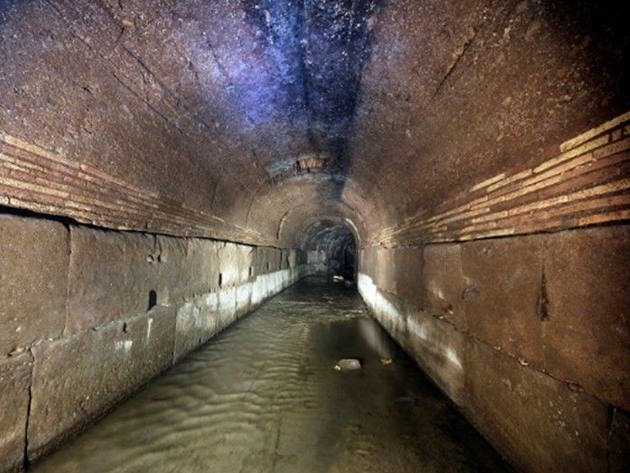
The largest of the still-functioning Roman drains, the Cloaca Maxima was the source of a water-drainage channel that ran from the Roman Forum towards the "vicus Tuscus" The drain emptied into the Tiber at Ponte Emilio, along a tortuous route through the Velabro, the Foro Boario, and a wide curve. Generally, tradition links the initial stretches of the Cloaca to the drainage system that was established by the Tarquini family in the valley of the Foro Romano. The walls of the first section are constructed of stone blocks and, along the route, minor, capped drains entered them. The drain originally ran in the open, but in the II-I c. BC a small vault hewn in volcanic rock was constructed, interred at different points by restorations in primitive stone or brick walls. When it reaches the Tevere, the drain ends up in a peperino armillary. The section of the drain at the embankment is 2.7m high, and 2.12m wide and increases more and more along the route. The end of the drain reaches 3.30m in height and 4.50m in width. The final stretch was straightened following the construction of a wall which ran alongside the riverbank. The section of the drain going from via del Velabro to the entrance is communal property. An in-depth, organic study of the Cloaca Massima has not yet been undertaken: the problems occurring along the drain have persuaded the archaeologists only to examine the first section, today as in the last century.
Informationen
The monument is closed for security reasons
 Condividi
Condividi
Location
Um mehr über alle barrierefreien Dienste zu erfahren, besuchen Sie den Abschnitt barrierefreies Rom.











































